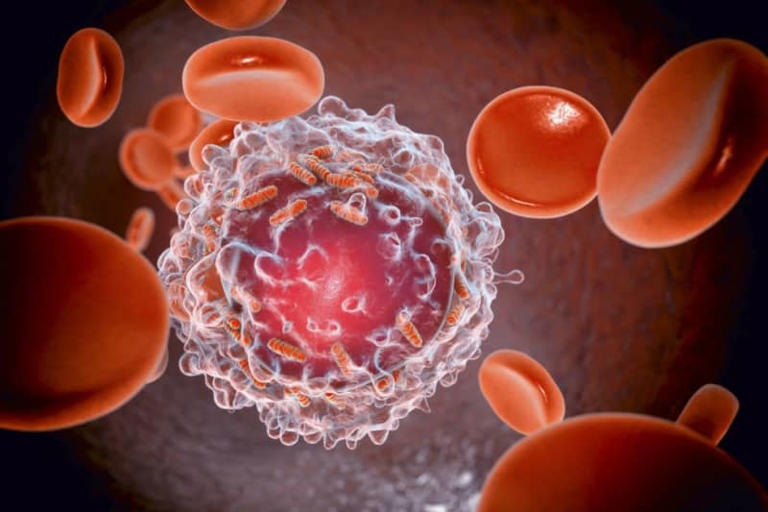Global Antimicrobial Resistance Threat is now one of the most pressing public health concerns, with experts warning that it could cause over 40 million deaths by 2050. Learn more about the urgent need for action against this growing danger.

© GB News
Global Antimicrobial Resistance Threat: A Looming Crisis
Antimicrobial resistance (AMR) has emerged as one of the most significant threats to global public health. The World Health Organization (WHO) has raised the alarm, predicting that AMR could claim over 40 million lives by 2050 if immediate action is not taken. This Global Antimicrobial Resistance Threat requires urgent attention, as drug-resistant infections are becoming increasingly deadly across the globe.
A recent study, published in The Lancet by the Global Research on Antimicrobial Resistance (GRAM) project, highlights the severity of the situation. It estimates that AMR-related deaths could increase by 70% in the coming decades, with bacteria responsible for 8.22 million deaths annually by mid-century. The Global Antimicrobial Resistance Threat is not just a future concern; it is a crisis that is unfolding right now.
Rising Death Toll from Drug-Resistant Infections
According to the GRAM project, more than one million people die from drug-resistant infections each year. While deaths among young children have decreased over the past 30 years, older populations have seen a dramatic increase in mortality due to AMR. The study shows that deaths in individuals over 70 years old have risen by more than 80%. This stark contrast between different age groups emphasizes the urgent need to combat this Global Antimicrobial Resistance Threat as the global population continues to age.
By 2050, researchers estimate that 1.91 million people could die directly from AMR-related infections every year. This represents a 70% rise from 2022 figures. AMR is expected to play a role in millions more deaths worldwide, making it one of the most pressing public health challenges of the 21st century.
South Asia: The Epicenter of the Crisis
The Global Antimicrobial Resistance Threat is particularly concerning in South Asia, where countries such as India, Pakistan, and Bangladesh are expected to bear the highest burden. The GRAM project estimates that these countries could experience 11.8 million AMR-related deaths between 2025 and 2050. In these regions, drug-resistant bacteria are already responsible for a significant proportion of infections, and the situation is expected to worsen in the coming decades.
This highlights the need for global cooperation and investment in healthcare systems, particularly in low- and middle-income countries, where the healthcare infrastructure may struggle to cope with the rising threat of AMR. Stronger measures, such as improved infection prevention, the development of new antibiotics, and more effective vaccination programs, will be essential in mitigating the impact of the Global Antimicrobial Resistance Threat.
What is Driving the Global Antimicrobial Resistance Threat?
The rise of antimicrobial resistance can be traced to several factors. In many parts of the world, antibiotics are frequently prescribed unnecessarily, leading to bacteria developing resistance to these drugs. This includes both the use of antibiotics in human medicine and their overuse in agriculture and animal farming, where they are often used to promote growth and prevent illness in livestock.
The Global Antimicrobial Resistance Threat is also driven by a lack of new antibiotic development. Over the past few decades, fewer new antibiotics have been introduced to the market, leaving healthcare providers with limited options to treat drug-resistant infections. Without significant investment in the development of new drugs, the world faces a future where routine infections become untreatable, and medical procedures like surgeries and chemotherapy become riskier due to the threat of drug-resistant infections.
The Ageing Population and AMR
The rise in deaths among older adults is another crucial aspect of the Global Antimicrobial Resistance Threat. As populations age globally, the burden of AMR is expected to increase significantly. Older individuals are often more susceptible to infections and may require more frequent use of antibiotics, which in turn increases their risk of developing drug-resistant infections. The fall in deaths from sepsis and AMR-related infections in children over the past 30 years is an achievement to celebrate, but the rise in deaths among the elderly cannot be ignored.
According to Dr. Kevin Ikuta from the University of California, the threat posed by AMR will continue to grow as the global population ages. This makes it more urgent than ever to take action to protect older individuals from the effects of drug-resistant infections. The Global Antimicrobial Resistance Threat requires a multi-pronged approach that addresses the needs of both younger and older populations.
The Urgent Need for Action Against AMR
Addressing the Global Antimicrobial Resistance Threat will require a coordinated global effort. Health experts have emphasized the importance of implementing effective strategies to reduce the spread of drug-resistant infections. These include:
- Improved infection prevention measures: Ensuring that healthcare settings follow strict hygiene practices can help reduce the spread of drug-resistant infections.
- Increased vaccination programs: Vaccines can prevent bacterial infections and reduce the need for antibiotics, which in turn lowers the risk of resistance developing.
- Reduced inappropriate use of antibiotics: The public must be educated about the dangers of overusing antibiotics and should only take them when prescribed by a healthcare professional.
- Developing new antibiotics and treatments: Investment in research and development is critical to finding new antibiotics that can combat drug-resistant bacteria. Promising new treatments, such as monoclonal antibodies, are already in development and offer hope for the future.
The Global Antimicrobial Resistance Threat Extends to Fungal Infections
While bacterial infections are a significant part of the Global Antimicrobial Resistance Threat, fungal infections also pose a serious risk. Scientists from the University of Manchester have warned of the growing resistance to antifungal drugs. Fungal pathogens account for around 3.8 million deaths annually, and many of these pathogens are becoming resistant to current treatments.
Fungal infections are often overlooked in discussions of antimicrobial resistance, but they are just as deadly as bacterial infections. As drug resistance spreads among fungal pathogens, healthcare providers will need new strategies to combat these infections and reduce the overall burden of AMR.
Hope for the Future: New Treatments on the Horizon
Despite the growing challenges posed by the Global Antimicrobial Resistance Threat, there is some hope on the horizon. Researchers at the University of Cambridge have made significant progress in developing monoclonal antibody treatments to combat AMR. By using genetically engineered mice, they have developed a monoclonal antibody drug that could prevent infections from Acinetobacter baumannii, a bacteria commonly associated with hospital-acquired infections.
This breakthrough, published in Nature Communications, demonstrates the potential for new treatments to address the Global Antimicrobial Resistance Threat. Continued research and innovation will be essential in finding new ways to fight drug-resistant infections and protect public health in the coming decades.
Conclusion
The Global Antimicrobial Resistance Threat is a serious and growing crisis that demands immediate action. With millions of lives at stake, the world cannot afford to ignore the rising toll of drug-resistant infections. By investing in new treatments, improving healthcare systems, and raising public awareness about the dangers of overusing antibiotics, we can reduce the impact of AMR and protect future generations from this deadly threat. Now is the time to act.
Related:
South African Asteroid Impact: 7 Stunning Discoveries



